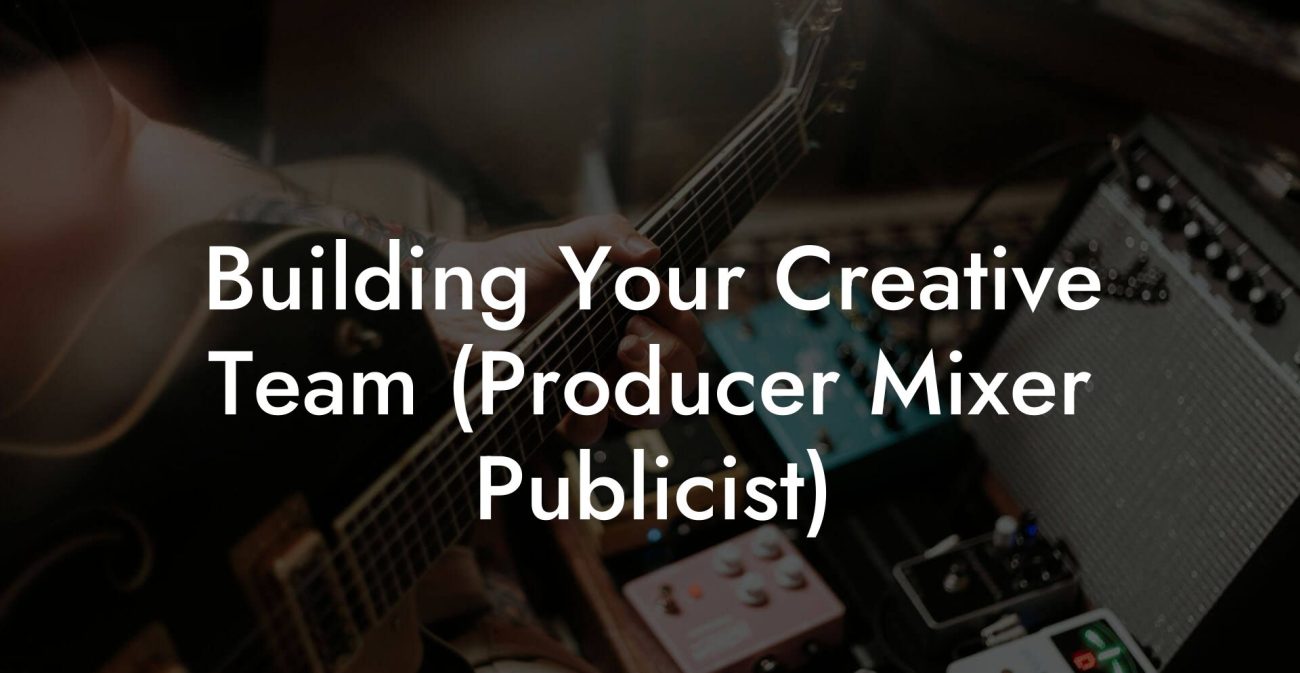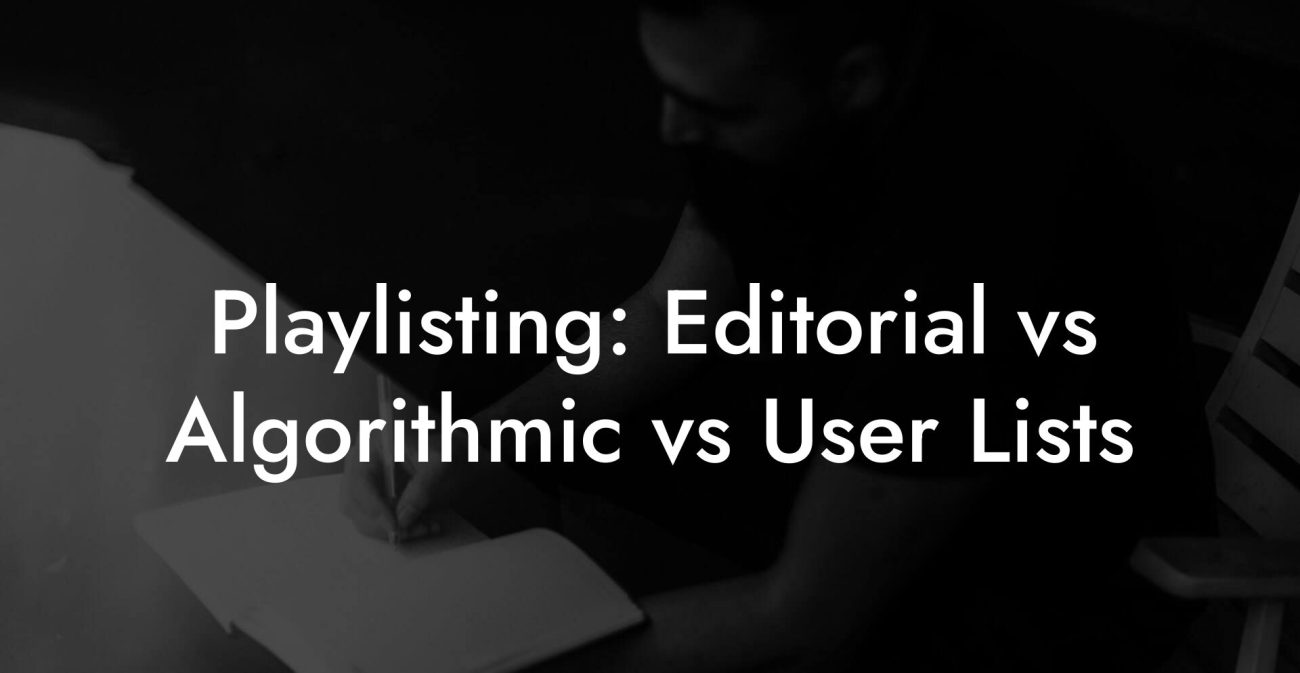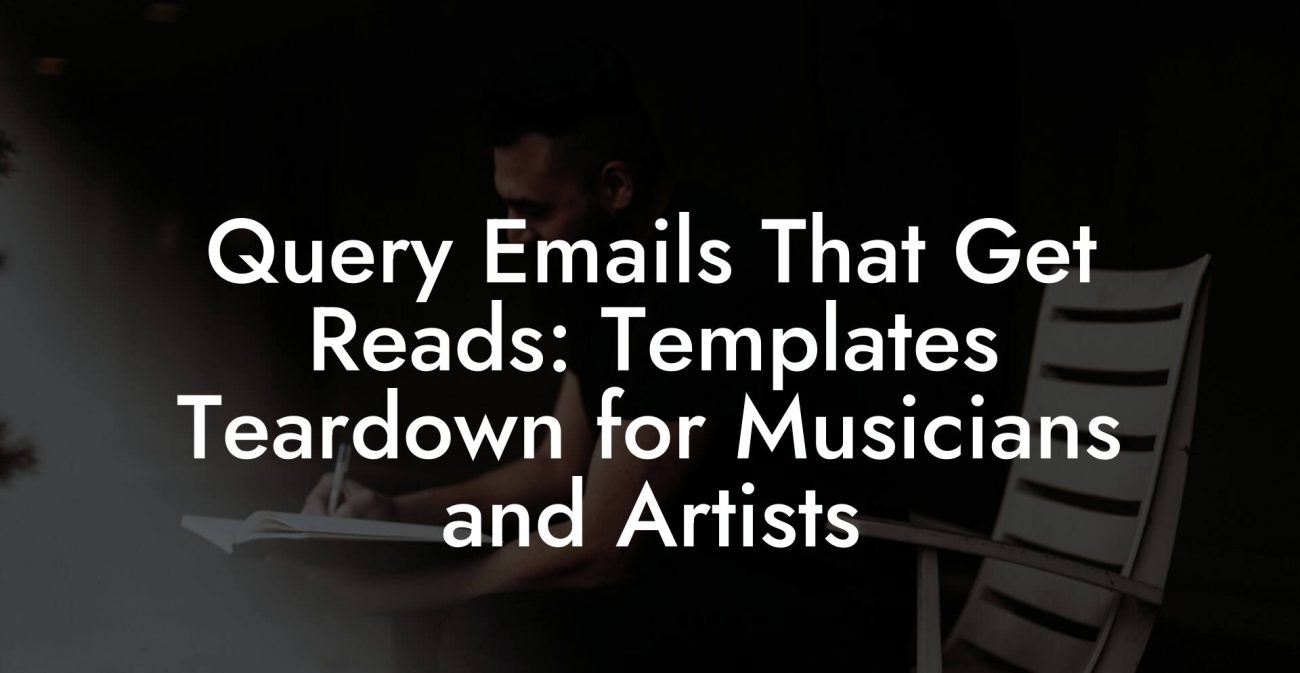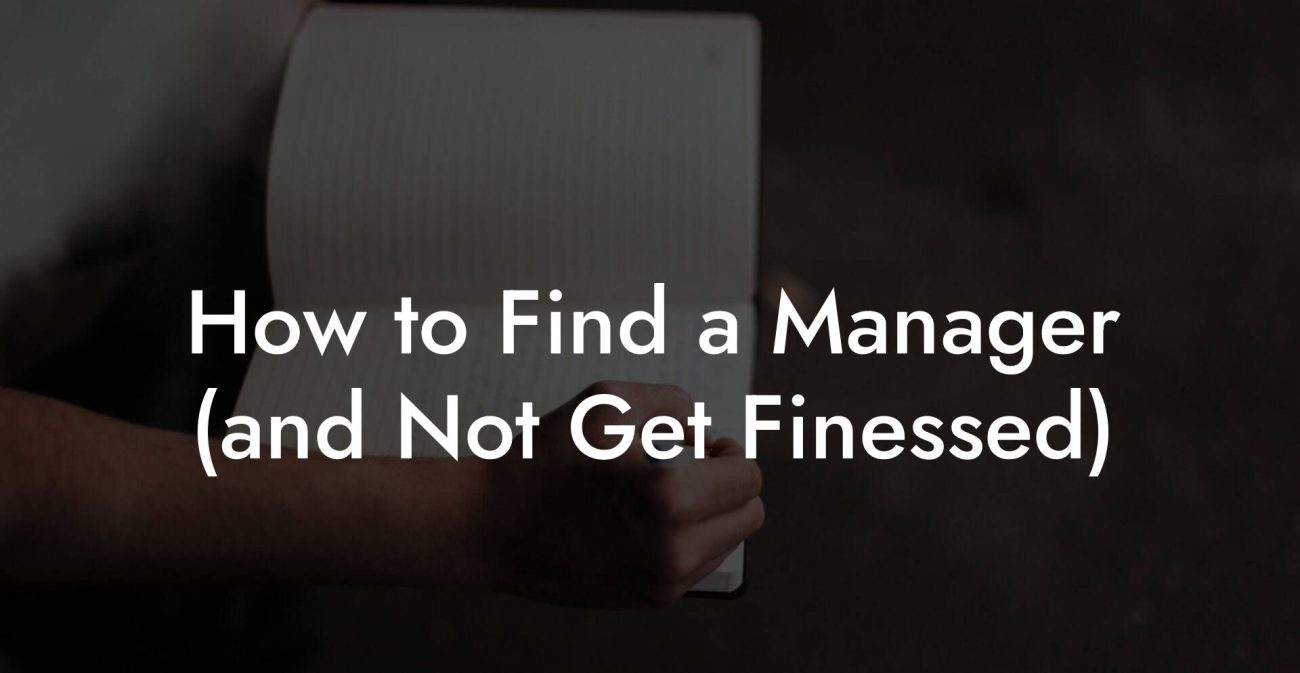Songwriting Advice
A&R Explained: What They Scout and How to Pitch
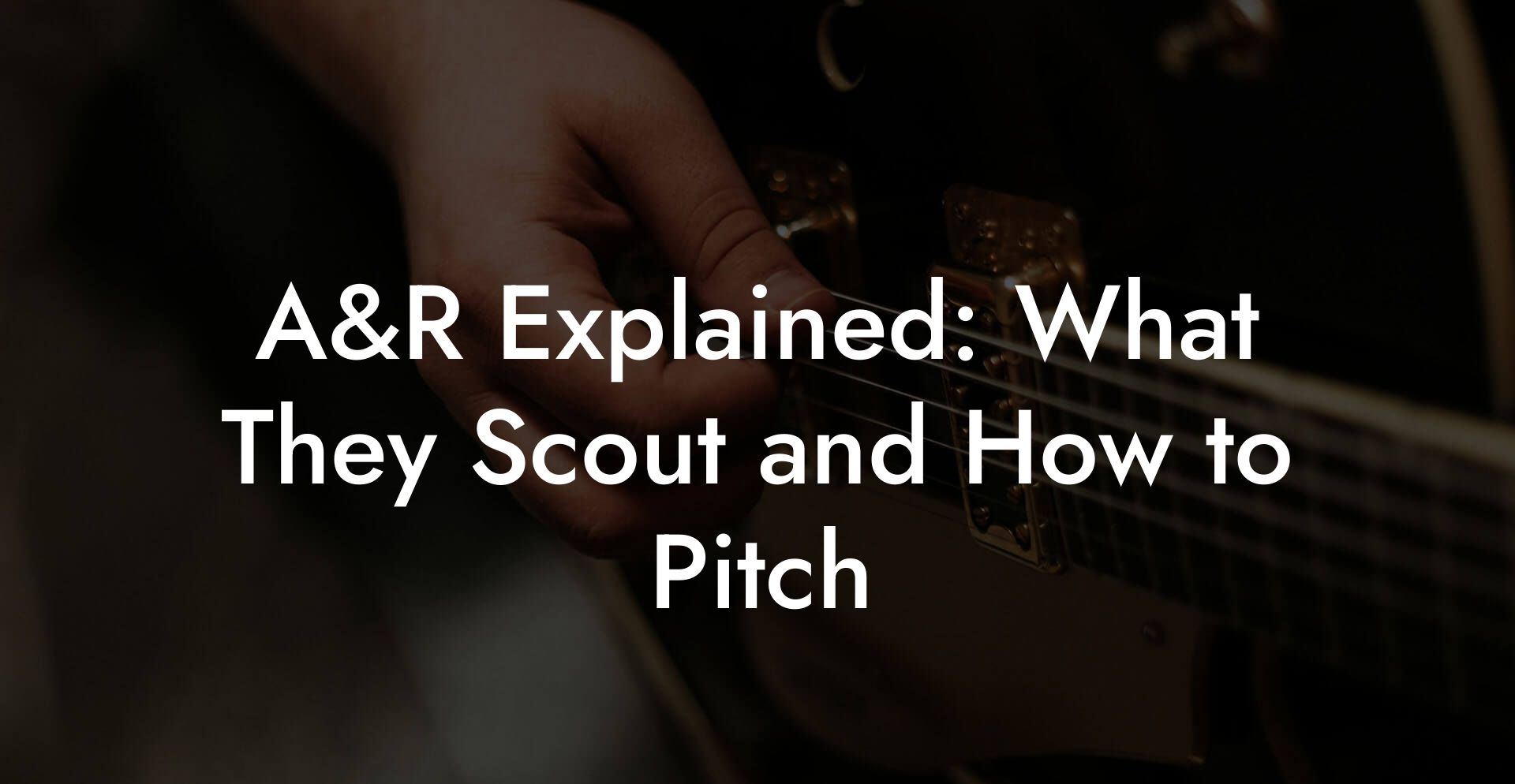
If you have ever wondered who the music gatekeepers are and what makes them press play, this is the guide you need. A and R stands for Artist and Repertoire. That is the team at a label or company whose job is to find artists, songs, and producers that can become successful. They are part talent scout and part therapist with a Rolodex. They listen to demos while balancing spreadsheets and hustle. This guide tells you exactly what A and R people actually look for, how they make decisions, and the best way to pitch so they do not hit delete.
Quick Interruption: Ever wondered how huge artists end up fighting for their own songs? The answer is in the fine print. Learn the lines that protect you. Own your masters. Keep royalties. Keep playing shows without moving back in with Mom. Find out more →
Quick Links to Useful Sections
- What is A and R
- What do A and R scout
- Voice and uniqueness
- Songwriting and topline skills
- Production and sonic identity
- Audience and traction
- Live performance and charisma
- Team and commitment
- Publishing and rights clarity
- How A and R discover talent
- Playlists and streaming patterns
- Social platforms
- Live shows and festivals
- Referrals and network
- Industry events and conferences
- What makes an A and R say yes
- Repeatable hooks
- Clear artist identity
- Growth trajectory
- Writable catalog
- Ownership clarity
- Personality and coachability
- How to pitch A and R
- Prep work before you pitch
- Email pitch template that does not suck
- DM script for social platforms
- What to do when you get a meeting
- What to bring
- What to say and what not to say
- Common pitching mistakes
- How A and R decisions actually happen inside a label
- Initial interest
- The pitch meeting
- Offer and negotiation
- How to keep A and R interested after initial contact
- How to make your pitch stand out
- Real life examples and scenarios
- Scenario 1: Viral clip without depth
- Scenario 2: Small but real growth
- Scenario 3: Clean rights save the day
- Action plan you can use this week
- FAQ
- FAQ Schema
This is written for millennial and Gen Z artists who do not want fluff. You will get real life scenarios, jargon explained, email scripts that do not sound like a bot wrote them, and a step by step action plan you can use this week. Also expect a little rude honesty. That is how careers move faster.
What is A and R
A and R stands for Artist and Repertoire. This department scouts talent and repertoire, which means they find artists and the songs those artists will release. An A and R rep hears songs, sees live shows, meets managers, and builds a roster of acts the label might sign. Bigger labels have A and R teams that work with marketing, legal, promotion, and A and R executives who decide which artists get a deal. Smaller labels or indie operations often have a single A and R person doing all the jobs from scouting to budget coordination.
Quick term check
- A and R rep is the person who scouts and signs talent.
- Repertoire means songs and writers the label can exploit commercially.
- DSP means digital service provider. Examples are Spotify, Apple Music, and Amazon Music. These platforms carry streams and playlist placements that A and R people monitor.
- PRO means performing rights organization. Examples are ASCAP, BMI, and SESAC in the United States. PROs collect songwriter royalties for public performances.
What do A and R scout
If you think A and R only cares about raw talent, think again. Talent matters. So does everything else.
Voice and uniqueness
They want voices that are recognizable. Not perfect singers only. Recognizable singers. Think of voices you could pick out in a crowded playlist. Singers who carve a lane with tone, attitude, or phrasing. Real life scenario: an A and R rep hears two singers cover the same hook. One sounds like the original. The other sounds like themselves. The rep calls the second one back.
Songwriting and topline skills
Topline means melody and lyrics sung over a track. If you write your own songs, you score extra points. A strong topline that sticks within three plays is gold. A and R listen for hooks, structure, and whether the lyrics create a clear emotional promise. Scenario: you send three songs and one chorus is instantly repeatable. The rep will ping you about that chorus even if the other songs need work.
Production and sonic identity
Labels buy a sound as much as they buy an artist. Production quality matters but style and identity matter more. A bedroom demo can work if it has a clear production voice that suggests how bigger production would enhance it. Scenario: lo fi recorded bedroom pop with a signature vocal chop pattern gets interest because the sonic idea is strong and scalable.
Audience and traction
Metrics are the new currency. Monthly listeners on Spotify, follower growth on TikTok, video views, and concert attendance all matter. Do not confuse vanity numbers with engagement. A thousand real fans who buy tickets and share your music look better than ten thousand passive followers. Scenario: an artist with 8 thousand followers but a sold out 200 person run in small venues looks more attractive than an account with 100 thousand followers and zero ticket sales.
Live performance and charisma
Can you carry a show and hold attention for forty five minutes without lip syncing every chorus? Live presence is a practical test. Labels invest in touring and exposure. If you can do the live job the label needs, you are easier to develop. Scenario: a singer with an energetic live set who makes each fan feel seen will get along with A and R quicker than a technically flawless but emotionless performer.
Team and commitment
Are you working with a manager, a publicist, or a lawyer? Do you have a songwriter partner? Labels value teams because they reduce friction. Also show commitment. Someone who releases music consistently and treats their career like a job is easier to sign than someone who drops a track every year when inspiration hits. Scenario: an artist who has a manager and a catalog of releases looks like a safer bet for investment.
Publishing and rights clarity
A and R checks if songs are clean to sign. They want to know who owns the composition and the master recording. Quick primer
- Composition means the melody and lyrics. These are publishing rights.
- Master means the recorded performance. Labels often want to control the master or at least have a license to distribute it.
- Publishing splits declare who owns what percentage of the composition between songwriters and producers.
If your splits are messy or if an old contract already assigns rights away, A and R will raise red flags. Scenario: you co wrote a hit in a writing room but never formalized splits. The label will ask for proof and may delay or pull an interest call until everything is fixed.
How A and R discover talent
They do not only rely on cold emails from artists. Here is how they find artists in practice.
Playlists and streaming patterns
Curators and platform editors often surface artists who then get noticed by A and R. Data shows trending increases in listening and playlist adds. A and R use tools to watch moment to moment performance on DSPs. Scenario: an indie playlist adds a song and streams spike. The A and R rep gets an alert and listens to the rest of the catalog.
Social platforms
TikTok, Instagram, YouTube, and Shorts are huge scouting grounds. A viral snippet can attract an A and R call fast. But remember virality without follow through is a risk. Reps look at whether the creator can convert views into fans and whether the artist has more content to build on. Scenario: a hook goes viral on TikTok. The rep will check your profile to see if you can do more than one viral moment.
Live shows and festivals
Seeing an artist perform live remains one of the best ways to evaluate potential. Reps attend showcases, opening slots, and local gigs. Even small clubs matter. Scenario: an artist opens for a well known act and steals the show. That one night can move a rep to reach out.
Referrals and network
Managers, producers, publishers, and other artists refer talent. A warm intro from someone the rep trusts is always better than a cold email. Scenario: a producer you worked with texts their A and R friend a private link and the rep follows up within twenty four hours.
Industry events and conferences
Conferences, songwriting camps, and showcases are places where A and R meet artists and writers. Be prepared because a five minute performance can change a conversation. Scenario: you hand a USB card with one track and a simple bio at a conference and hear back the next week for a call.
What makes an A and R say yes
There is no single checklist that guarantees a record deal. Still, these factors consistently push decisions in your favor.
Repeatable hooks
If your chorus or topline can be sung by a barista after one listen, that is a major plus. Hooks are shareable. Scenario: your chorus is used in a fan video and people sing it back in comments. That demonstrates memorability.
Clear artist identity
Who are you and why should anyone care. Your identity is the combination of sound, image, and story. If you cannot explain what makes you different in one sentence, work on clarity. Scenario: an artist who defines their vibe as melancholy pop with punk energy immediately gives the rep a clear picture to sell.
Growth trajectory
Labels want upward movement. Steady increases in streams, followers, and gig size suggest you are building momentum. Scenario: monthly listeners that double over three months with real engagement indicate a reliable trend.
Writable catalog
Do you have multiple songs that could become singles? A one hit wonder is less appealing than an artist with a pipeline. Scenario: you have two potential singles and several strong B tracks that could support touring and sync pitches.
Ownership clarity
Clean rights and documented splits make deals easier. If you own your masters or have a simple exclusive deal with a distributor, that is appealing. Scenario: a song with a complicated sample or uncleared feature will be a deal breaker until it is cleaned up.
Personality and coachability
Labels invest time and money. They want artists who can accept guidance and execute. Coachability does not mean giving up your voice. It means you can incorporate feedback and still be yourself. Scenario: an artist who hears a note about arrangement and comes back with an improved version shows maturity.
How to pitch A and R
Pitching is a skill. A bad pitch wastes both your time and theirs. Here is a realistic step by step process with templates you can steal.
Prep work before you pitch
- Pick one lead song. Do not send a folder of ten songs and expect attention. One clear single gives focus.
- Create a private streaming link. Use unlisted SoundCloud, a private YouTube link, or Spotify for Artists Canvas and a private playlist. Make sure the stream quality is good.
- Build a one sheet. A one sheet is a one page document that includes artist bio, key metrics, links, top tracks, and contact info. Keep it readable on a phone.
- Know your ask. Do you want a meeting, feedback, or an introduction? Ask specifically.
- Gather proof that your songs play well live. Have a short live clip or a link to a set.
Email pitch template that does not suck
Subject line examples
- New single: [Artist Name] x [Song Title] private link
- [Artist Name] one minute clip attached. Short story: sold out two shows
Email body template
Hello [First Name],
My name is [Your Name]. I am the artist behind [Artist Name]. I do indie pop with cinematic vocal hooks. I am sending my new single [Song Title]. It is an intimate chorus with a repeatable hook. Private stream here [link].
Quick context
- Monthly listeners on Spotify: [number]
- Recent traction: sold out 2 shows in [City Name]. TikTok clip hit [views] and converted to [followers].
- Who is on the team: manager [Name], booking [Name], publisher if applicable
Ask: Would you be open to a ten minute call next week to share the story behind the song and the plan for release? I am available [two windows].
Thanks for listening. If this is not for you, any feedback you have will be gold.
Best,
[Your Name and contact info]
Why this works
- Short. A and R people are busy.
- Context. You show metrics without bragging.
- Specific ask. A simple calendar request makes it easy to say yes.
DM script for social platforms
Keep it casual and useful
Hey [Name], love what you shared about [recent playlist or act]. I am [Artist Name]. I have a short private clip I think fits your taste. Would you mind a one minute private link? Appreciate any feedback. Thanks.
Do not DM ten thousand people with the same message. A thoughtful one line with a private link is better than mass spam.
What to do when you get a meeting
When an A and R person invites you to talk, treat it like an audition and a job interview at once.
What to bring
- One sheet and a printed or digital link to the lead song and two backups.
- A short press kit with photos, links, and a one line artist bio you can say in five seconds.
- Clear goals. Are you looking for a development deal, sync, distribution, or a full record deal?
- Calendar availability. If they want a studio visit or a follow up, make scheduling easy.
What to say and what not to say
Say what you want and what you will deliver. Do not say you want a major label deal so you can be famous overnight. Instead say you want support to grow audience and make records. Be specific about plans for release, touring, and promotional ideas. Do not ask about money first. Ask about creative fit first. Money talks later.
Common pitching mistakes
- Sending long attachments. Nobody downloads a fifty megabyte file on their phone while on the subway.
- Spamming the same message to multiple people at the same company. If you were the rep you would not respond either.
- No context. Metrics alone do not tell the story. Explain why those numbers matter.
- Bad audio quality. A messy master or low level mix will distract from the song itself.
- Being vague about goals. If you do not know what you want, the rep cannot help you.
How A and R decisions actually happen inside a label
It is not magic. It is a mix of taste, timing, and budget.
Initial interest
An A and R rep hears a song and wants a deeper look. They will check metrics, reach out to the artist, talk to managers, and possibly ask legal to confirm rights. If the rep sees potential, they will present the artist to an A and R executive and sometimes to marketing and streaming teams.
The pitch meeting
At the label there is often a meeting where the rep plays the song and shares data. The team asks how the artist fits the label strategy, what budget is needed, and what timeline looks like. If the label is small, one person can decide. If the label is major, many stakeholders will weigh in.
Offer and negotiation
Offers vary. Here are common types
- Standard record deal means the label funds production, promotion, and distribution in exchange for the master rights or a license. The artist receives an advance and royalties that are often recoupable. Recoupable means the label recovers its advance and costs from your royalties before you see more money.
- Distribution deal means the label or distributor handles placement and delivery to DSPs but you retain more control over your masters.
- Development deal means a small advance and limited support as the label tests you. The goal is to develop you into a full artist on the roster.
- 360 deal is an agreement where the label takes a share of recording, publishing, touring, and merchandise revenue. That is because the label invests in career building rather than single records.
Legal will flag anything that complicates a future release such as uncleared samples or disputed splits. Be ready for that conversation by having paperwork ready and contacts for co writers and producers.
How to keep A and R interested after initial contact
Interest is perishable. Follow up with meaningful progress rather than noise.
- Send a monthly update with one clear new item like a new song, a sold out show, or a sync placement.
- Invite them to a show with a small time window. Labels get many invites. Make it easy for them.
- Show momentum. A new milestone rewires their attention. Growth is compelling.
- Be patient. Some signings take months or years. Keep your standards high and your releases steady.
How to make your pitch stand out
Do things that are smart and cheap. Make the rep’s job easier.
- Create a 30 second vertical video of your song that shows the hook and your face. That helps Tiktok era discovery and gives a rep a shareable asset.
- Have a clear visual identity with two or three professional images that match your music tone. Visuals help the team imagine campaigns.
- Provide simple data. Instead of dumping raw numbers, show conversion. Example: TikTok video with 200k views resulted in 1.2k new monthly listeners and two sold out shows in the region where the song trended.
- Offer a plan. Tell them what you would do with the label resources and what you can do without them. Show effort and a sense of partnership.
Real life examples and scenarios
Scenario 1: Viral clip without depth
An artist blows up with a thirty second hook on a trend. Views spike. The A and R rep listens and calls. Two weeks later the artist has no follow up content and no plan to tour. The interest cools. Lesson: virality is only useful if you have a plan to convert views into fans.
Scenario 2: Small but real growth
A songwriter plays frequent local shows, posts consistent vertical content, and develops a catalog of four strong singles. Their monthly listeners grow from 3k to 18k over six months. A rep sees the steady growth and calls. The artist already has a manager and a simple one sheet. They sign a development deal that funds a new EP. Lesson: consistency and proof of fan conversion test better than sudden spikes.
Scenario 3: Clean rights save the day
A band writes a song that samples an old record without clearing it. The A and R rep loves the song but legal warns the sample will be expensive to clear. The offer is delayed and negotiating ownership becomes messy. If the band had asked for clearance before pitching, the deal would have moved faster. Lesson: clear paperwork and proactive problem solving build trust.
Action plan you can use this week
- Pick your one lead single and make sure the mix is clean. If you do not have a mix engineer, focus on clarity and vocal level.
- Create a one sheet. Keep it one page and mobile friendly.
- Record a 30 second vertical video with the hook and a call to action. Post it and track conversion to your streaming link.
- Identify five A and R reps who work with artists you admire. Find their contact or a mutual connection. Do not spam. Prepare one personalized email per rep.
- Prepare a calendar with two time windows for a follow up call. Include it in your email.
- If you have co writers or producers, make sure splits are documented and you can show a screenshot or a signed agreement if asked.
FAQ
What does A and R mean
A and R means Artist and Repertoire. It is the department that finds artists and songs. A and R reps act as talent scouts, project managers, and internal champions inside a label. They help decide who the label signs and how to develop those artists.
How do I get an A and R to listen to my music
Warm introductions from managers, producers, or industry professionals work best. If you must reach out cold, send a short email with one private link, clear metrics, and a specific ask. Follow up politely with meaningful updates. Do not spam every rep at the same company. One thoughtful message beats fifty generic ones.
Do I need a manager before pitching
You do not strictly need a manager to pitch, but having one helps. Managers provide context, schedule meetings, and negotiate deals. If you do not have a manager, be prepared to own the admin tasks and communicate like a pro. Labels are more comfortable with artists who have team support because it reduces friction.
What rights should I keep when signing
That depends on the deal. Ideally you keep publishing and license masters for a term, or you retain master ownership and sign a distribution agreement. Always ask for clarity about recoupment, advance repayment, and how royalties are calculated. Use a lawyer who knows music deals before signing anything.
What is the difference between publishing and masters
Publishing covers the composition meaning the melody and lyrics. Masters cover the actual recorded performance. If your song earns money on the radio or in public performance, the songwriter gets publishing income through a PRO like ASCAP or BMI. If the recorded track gets streamed or licensed, the master owner gets master royalties.
How long does it take to hear back from A and R
It can be fast or it can take months. Some reps answer within a week. Others take longer. If you do not hear back within two weeks, send one polite follow up with new information rather than a request for an answer. Keep them updated with meaningful progress.
Does streaming numbers matter more than talent
Both matter. Numbers get attention. Talent keeps you in a deal. Labels prefer artists who show both creative spark and audience traction. If numbers exist without talent, the relationship is fragile. If talent exists without numbers, development is possible but slower.
Can I pitch directly on Spotify or Apple Music
Spotify and Apple Music have tools for editorial pitching through Spotify for Artists and Apple Music for Artists. These are not the same as pitching a label, but they help with playlist consideration. Editorial playlists can drive discovery that then leads to label interest. Use these tools alongside outreach to human contacts.
What is a one sheet and what should it include
A one sheet is a one page summary of your artist identity, metrics, links, press quotes, and contact information. Include a short bio, top tracks, recent achievements, team contacts, and clear links to streaming and socials. Keep visuals consistent with your branding so the rep can quickly see who you are.

